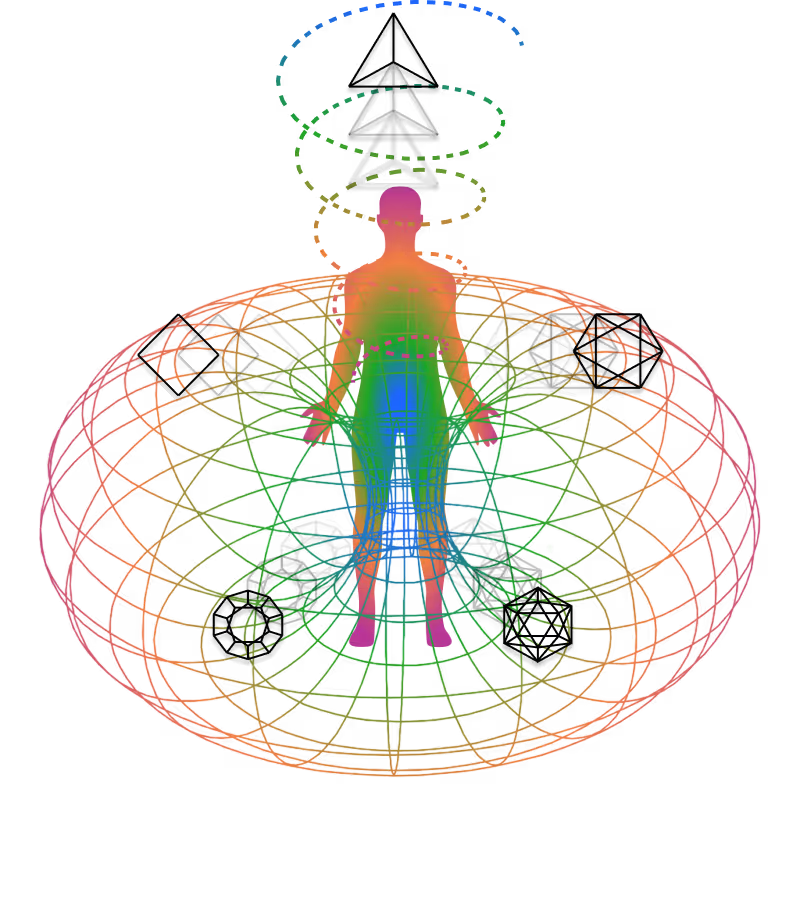The Vastu Architecture Compiler
Lesson Details
The Vastu Architecture Compiler (VAC) is the Architecture component of the Rishi Operating System (Cosmic OS v1.0), responsible for optimizing the physical environment (built structures and land) to maximize the flow of vital life force (Prana) and promote geometric coherence for the occupants. Vastu Shastra, the ancient science of architecture, is integrated as a set of algorithms that ensure alignment between micro-environments (buildings) and the macro-environment (cosmic energies).

🎙️ Related Podclass
Lesson Content
I. Computational Core: The Vastu-Purusha-Mandala Blueprint
The foundational data structure and computational grid for the VAC is the Vastu-Purusha-Mandala (VPM). This diagram serves as the system's geometric blueprint for architectural design and provides the mathematical basis for computation.
A. The VPM Grid Structure
- Fundamental Form: The VPM is typically a square, representing the fundamental geometric form of Hindu architecture, and is divided into a grid (commonly 64 or 81 squares).
- Flexibility and Symbolism: The architecture allows for geometric flexibility. The square grid can be computationally converted into other equivalent shapes (triangle, hexagon, octagon, circle) while retaining the core symbolic and energetic meaning, demonstrating its inherent adaptability to various site conditions.
- Prana Mapping: The grid's divisions hold layers of meaning within which the flow of Prana (life energy) is mapped and optimized, treating the structure as a living energy system.
II. Planning System for New Constructions (Geometric Optimization)
The planning system computes the optimal Sattvic geometry for a new construction based on three key input vectors: location, purpose, and the occupant's cognitive profile.
A. Input Acquisition
- Location Vector: Includes cardinal directionality, solar path modeling, and geographic element distribution (Pancha Bhoota dominance).
- Purpose Vector: Defines the primary function of the space (e.g., Temple, Residence, Office) to determine the necessary energy focus (e.g., high Sattva for a Puja room, high Agni for a Kitchen).
- Occupant Cognitive Profile: Integrates the individual's Triguṇa (Sattva, Rajas, Tamas) profile, or Dosha profile from the Health.app application, to ensure the environment harmonizes with or corrects the occupant’s current energetic and psychological state.
B. Optimal Geometry Algorithm (Pancha Bhoota Balancing)
The core algorithm is the Pancha Bhoota Balancer, which ensures the five elements—Earth, Water, Fire (Agni), Air (Vayu), and Space (Akasha)—are allocated to their proper directions and proportions.
- Directional Deity/Element Mapping: The algorithm maps specific deities and elements to each compass point, defining the required function for that sector of the building's geometry (e.g., Agni/Fire is mapped to the South-East, determining the optimal placement of the kitchen or power supply).
- Spatial Arrangement Constraint: Based on the location and purpose inputs, the VAC constrains the possible arrangement of spaces on the VPM grid. For instance:
- The North-East (associated with Ishwar) is optimized for spiritual practices (Puja room) and water sources (well, underground tank).
- The South-West (associated with Nairut) is allocated for elimination functions (W/c, toilet).
- Prana Flow Optimization: The final design must maximize the unimpeded circulation of Prana (life force) throughout the whole structure, promoting health and vitality.
C. Output: Optimized Structure and Placement
The compiler outputs a complete geometric blueprint, specifying the optimal design, layout, and placement of critical features to support the occupant's success and health by ensuring elemental harmony.
III. Real-Time Adjustment System for Existing Structures
The real-time adjustment system provides corrective measures for existing structures that exhibit geometric patterns (rigidity, fragmentation, or noise) resulting in low Prana flow or occupant stress.
A. Deviation Detection and Diagnosis
- Prana Flow Monitor: Measures disruptions in the flow of life energy (Prana) caused by structural flaws or incompatible spatial arrangements (e.g., a toilet in the North-East corner disrupting the water/Ishwar element).
- Cognitive Noise Analysis: The system diagnoses the impact on occupants by cross-referencing Prana disruption with reports of psychological states (e.g., confusion, stress) indicative of rajasic over-processing or tamasic under-processing as monitored by the Guna Process Scheduler.
B. Correction Protocol: Geometric Patching with Yantras
The primary method for non-structural, real-time course correction is the application of Yantras—mystical diagrams composed of specific geometric shapes (triangles, circles, squares)—which function as Geometric Patches for the environment.
- Yantra as Energy Matrix: A Yantra is designed as an energy matrix to attract, channel, and balance cosmic energy, removing specific imbalances or negative vibrations detected in the space.
- Targeted Application: The correction algorithm selects a Yantra associated with the deity or cosmic force governing the compromised element or direction. When energized and placed correctly, this geometric patch harmonizes the energies of the room or plot of land, enhancing positivity and clarity for the occupants.
Flora and Fauna Supplements: Supplementary adjustments involve placing specific flora or fauna (e.g., Holy Tulsi Plant, Jade Plant, or an aquarium) in designated directions to further enhance the flow of Prana and wealth, acting as environmental boosters for the corrected geometry.
🤌 Key Terms
🤌 Reflection Questions
Reflect on key questions from this lesson in our Exploration Journal.

Lesson Materials





